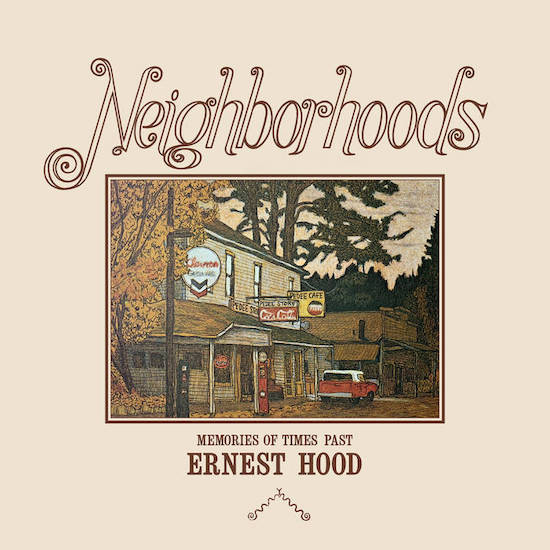“If the music seems a little bittersweet, well… isn’t that the taste of nostalgia?”
In Welsh, hiraeth is a wish to come back home that can never be fulfilled. The kindred Portuguese concept of saudade describes a yearning for realities other than the present one – a longing anchored by reverberations of things that are not and likely never were. Germans have Sehnsucht. Yet, none of these melancholy words seem to capture the shifting sense of our post-digital nostalgia, which might be evoked by something as mundane as late night binging of VH1 Classic videos. Thanks to the quality of available recordings, memories from the past four or five decades have become timeless ephemera. And if the pristine artefacts at the centre of our wistful desires are now available for consumption anytime and anywhere, what do we have left to be nostalgic about? Perhaps we should look towards nostalgia-infused art like Ernest Hood’s Neighborhoods for answers.
Originally recorded and self-released in 1975, now restored and reissued by Freedom to Spend, Neighborhoods consists of zither and synthesiser augmented field recordings that the Portland, Oregon composer and multi-instrumentalist started collecting in the 1950s. As the album title hints, Hood explores the soundscapes of Portland neighbourhoods, trying to capture their familiar character through the ages. And the familiarity that Hood transcribes is universal, never anachronistic: his neighbourhood is like my neighbourhood and all of our neighbourhoods. The racket of children playing, the interplay of cars grumbling and fauna tweeting, and the environmental noises turned into incidental music form a common language. Immersed in the music, I recall my own childhood, several decades and ten thousand kilometres removed from Hood’s recordings. Listening to your own memories reflected in someone else’s experiences makes it evident – and was it ever not? – that what we’re really nostalgic about is our younger selves. “It is meant to bring joy in reminiscence,” Hood writes in his original liner notes. “How familiar, how indelible the pictures are: aromas of soft velvet days, strong friendships, fears, hates, loves…” Oh, to be able to go back to those moments.
There is something unapologetic about the bittersweet emotions enclosed in Hood’s captured sounds. In fact, throughout most of the eight cuts, he chooses to amplify their intrinsic affectivity. On the introductory ‘Saturday Morning Doze’, birds’ singsong and sounds of a hazy and lazy Saturday are framed within glossy synth lines and tender zither strums. While the ambient music tropes he uses would today soon be renounced as kitsch, Hood’s earnestness elevates them to pure sonic euphoria. Like the “olly olly oxen free" melody that a girl first sings on ‘After School’ only for Hood’s keyboard to repeat it, with glee. Or the nocturnal “August Haze” that employs distant dog barks, insect chirrups, and a faint swinging radio transmission to masterfully preserve the essence of a sweltering hot and careless summer night. It all ends at night, too, with a game of Kick the Can and the Happy Days theme song hummed in passing, as the time to go home approaches.


